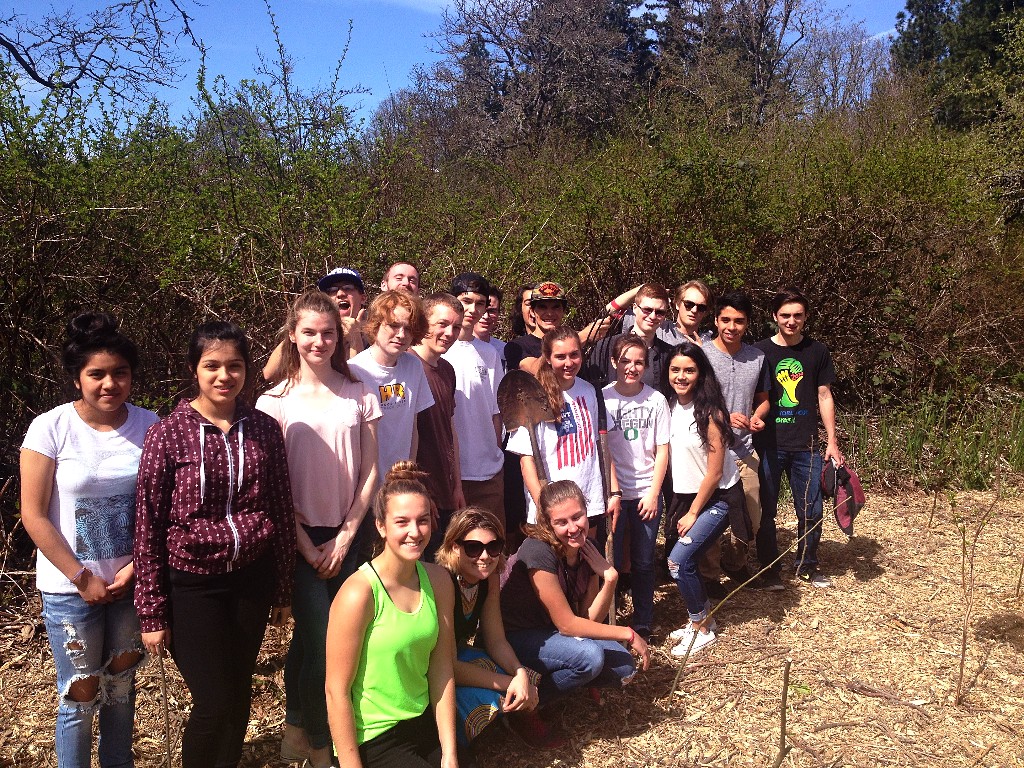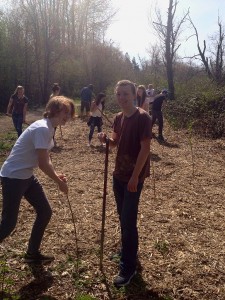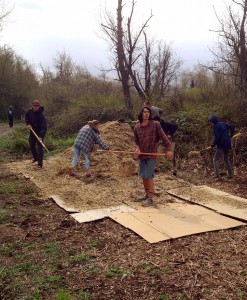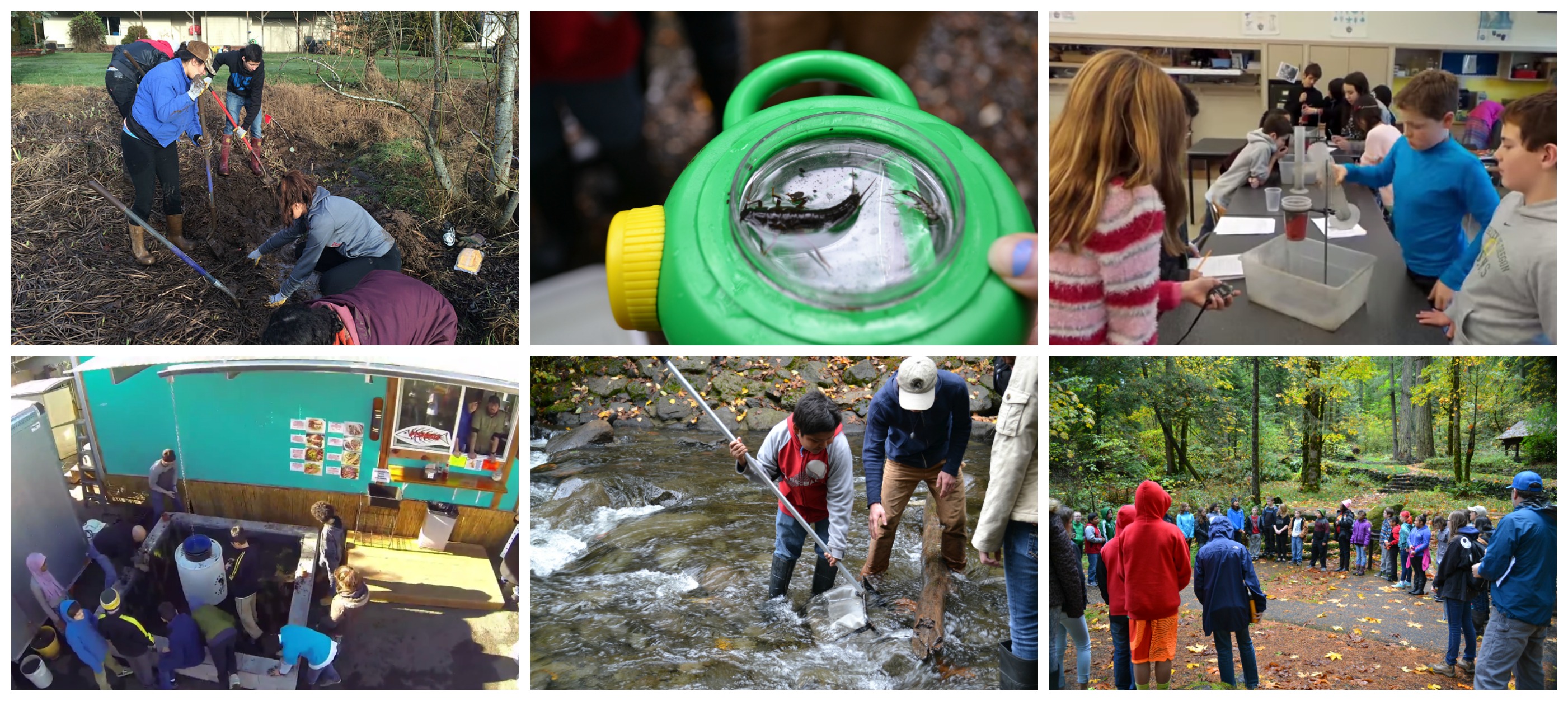Hood River Valley High School, Columbia River Gorge
Teacher: Joe Kelly, [10th-12th grades], Biology, Honors Ecology, General Life Science
Joining in the flurry of Salmon Watch service learning projects taking place this spring is Joe Kelly’s Honors Ecology class from Hood River Valley High School. The school is located just south of Hood River’s city center, and set between Indian Creek Golf Course and Indian Creek & Trailhead. The creek feeds into Hood River, which flows into the Columbia River.
For their Salmon Watch field trip this past fall, Joe’s students traveled out to the Little White Salmon River in Cook, Washington. After getting to witness hundreds of fall Chinook and Coho, and studying the surrounding riparian zone as well as engaging in in-stream macroinvertebrate sampling and water quality testing, the class returned to brainstorm how they could benefit salmon and local watershed habitat.
They decided to continue a hands-on habitat restoration effort along Indian Creek started by previous Hood River Valley High School students and other community members.
Click on the title to read more!
Joe’s Honors Ecology students from the 2014-15 school year had worked hard to remove non-native Reed Canary Grass along the creek bank for their Salmon Watch service learning project last spring.
Then, over the summer, they completed a soil solarization project to prevent the hardy grasses from growing back. Soil solarization essentially consists of laying down swathes of plastic material to superheat the soil and kill any grass attempting to regrow in the area. It is an environmentally friendly method to conventional chemical applications.
It is at this restoration site that Joe’s current Honors Ecology class planted native trees and shrubs just a few weeks ago. Catching a sunny day during the school week, they planted Willows, Cottonwoods, and Red Osier Dogwoods utilizing live stakes. Stakes are live, woody cuttings of a tree with branches trimmed off. Certain native species, such as those listed above, will grow new plants from the stakes planted in moist soil. Live staking has been shown to be an effective method for protecting and restoring riparian areas.
They finished the day by laying down cardboard sheets and layering mulch on top to further prevent invasive grasses and shrubs from growing back around the newly planted stakes.
This type of restoration project is essential to the future health of Indian Creek, Hood River and the Columbia River. Native plants provide multiple benefits to people, fish and wildlife. They use less water, add vital nutrients to the soil, and can reduce erosion and prevent flooding!
Hood River Valley High School partnered with Indian Creek Stewards/Hood River Watershed Group to accomplish their project. Indian Creek Stewards, housed at Hood River Watershed Group, is a voluntary forum of landowners, irrigation districts, educators, and businesses interested in working cooperatively to improve the Indian Creek watershed.
A big thank you to Hood River Valley High School, Indian Creek Stewards and Hood River Watershed Group for your work in continuing to improve Indian Creek for wildlife and the people who inhabit it!






Recent Comments